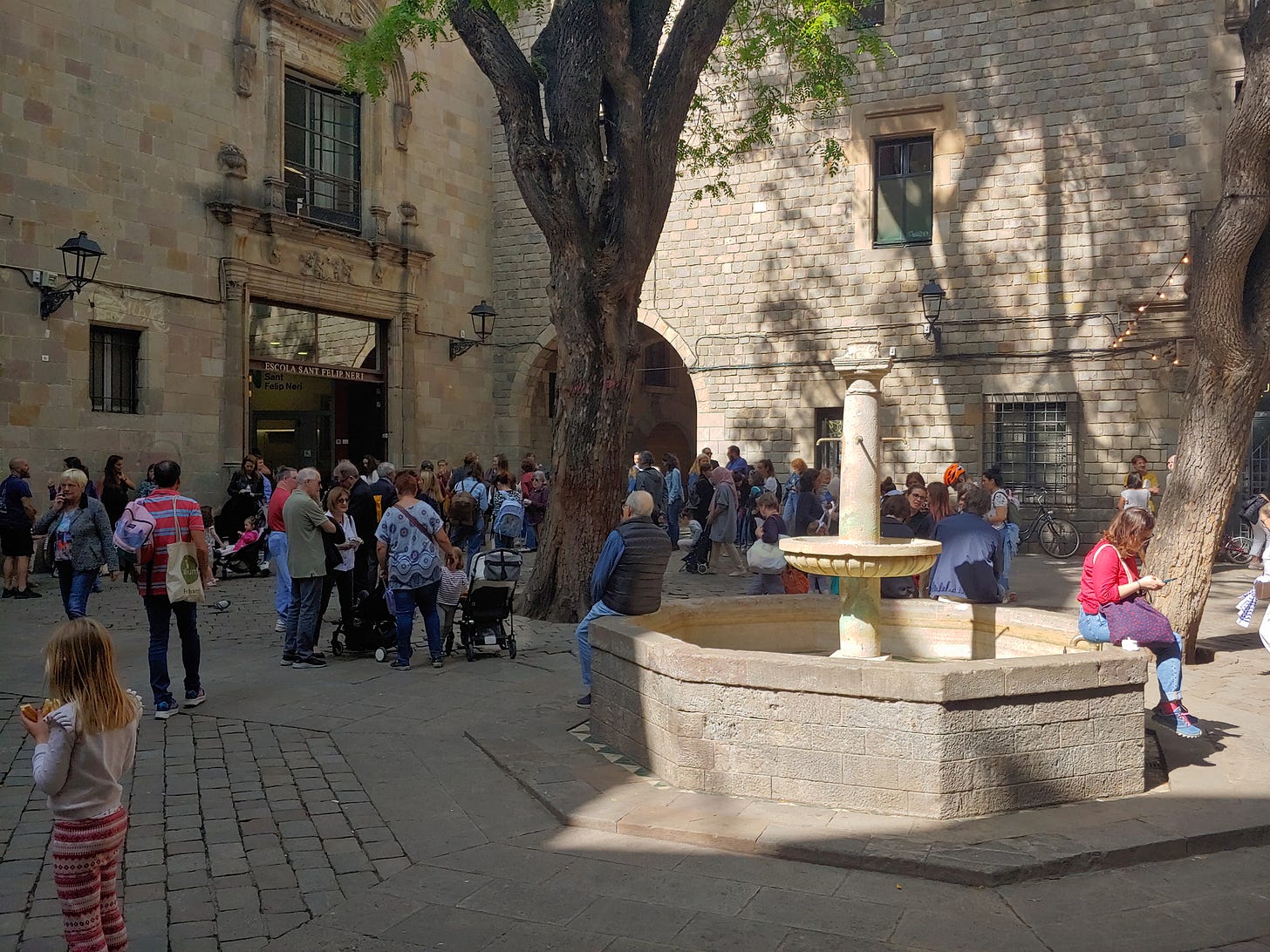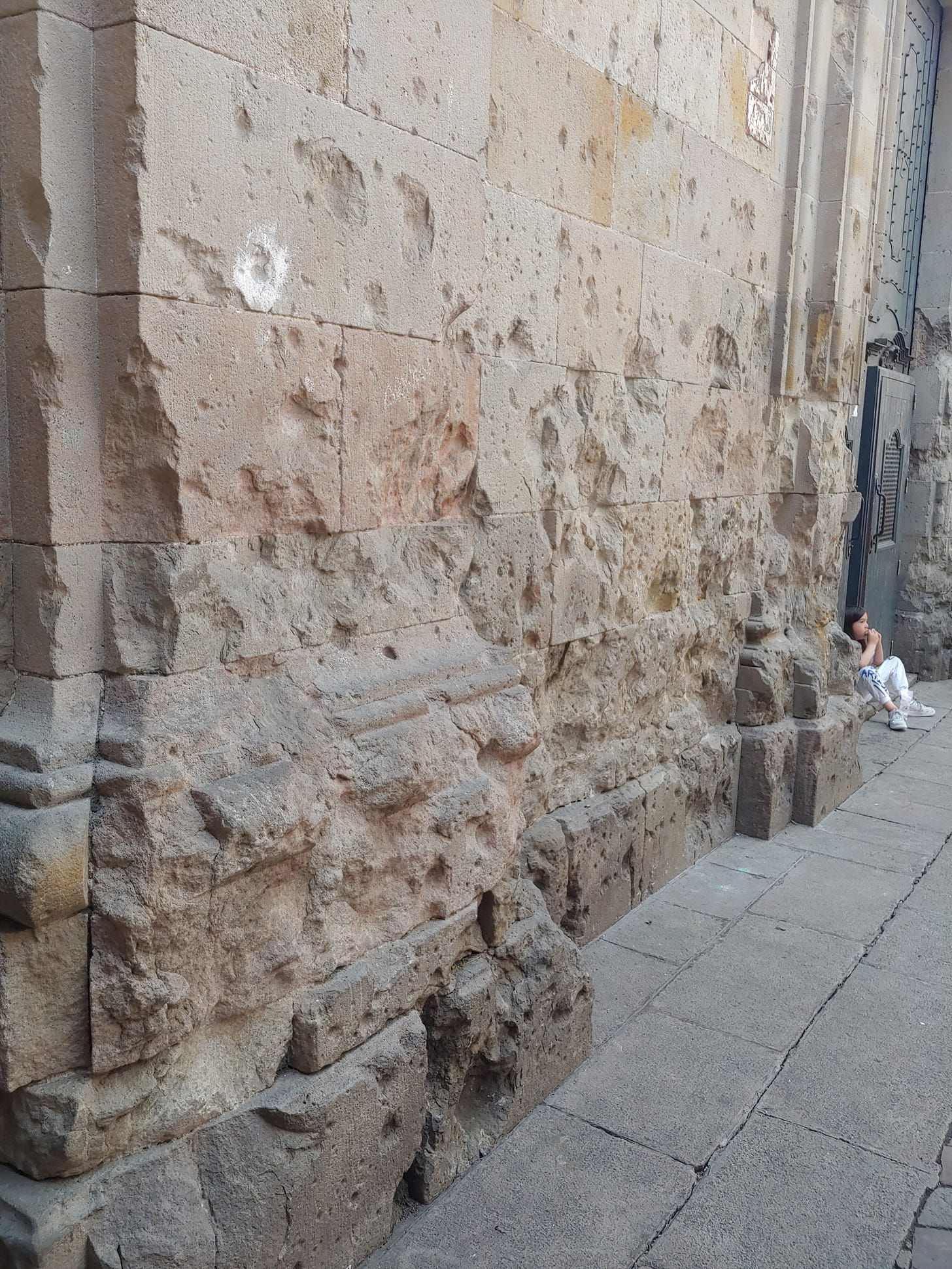Plaça de Sant Felip Neri: A Journey Into the Deep Place
Following Jungian thought, I am searching for self—a deep place within. This journey began many years ago and will continue for the rest of my life. I also believe this place exists in the external world, in certain spaces layered with memory, community, culture, design, and history. When the inner self and the outer collective self are in balance, they form a coherent whole, harmoniously influenced by both.
One such place, for me, is Plaça de Sant Felip Neri in Barcelona. I visited the square during a study abroad trip a couple of summers ago, a moment that, in many ways, encapsulated this balance between the inner and outer worlds. My colleague and I were traveling together, and she had arranged to meet an old friend she hadn’t seen in years. He met us in the Gothic Quarter, a part of the city where history clings to and emerges from and around every corner. As he greeted us warmly, he explained that he needed to pick up his elementary-age daughter and invited us to join him.
We followed him through the labyrinth of narrow, Gothic-era streets until we arrived at the plaça. It was vibrant with life—parents waiting for their children, and children laughing and playing soccer or tag around a fountain that centered the space. The scene could have been a postcard of simple, everyday joy, yet I felt the weight of the place almost immediately. Plazas are something we have a deficient of in the U.S.
Our friend, noticing our quiet awe, pointed to a wall. It was pockmarked with scars—not cracks of age or weathering, but shrapnel marks left by a bomb dropped during the Spanish Civil War. The bomb killed many, mostly children, who had sought shelter in the square. The juxtaposition was profound: children playing in the same space where children had once died. The lightness of the present moment collided with the trauma of the past, layering the plaça with a depth of memory that was almost tangible.
In that moment, I felt a convergence of the inner and outer worlds I often search for. Internally, the tragedy scratched into the walls stirred a deep feeling, a recognition of the fragility of life. Externally, the vitality of the present moment brought hope, resilience, and the reminder that life continues despite loss. The plaça became, in my mind, a "deep place"—a space where history, memory, and emotion collide, inviting those who visit to reflect, to feel, and to connect with something beyond themselves.
This experience reminded me that deep places are not always grand or monumental. Often, they are unknown corners of the world where the layers of human experience—grief, joy, struggle, and resilience—are imprinted on the landscape. They call us to stop, to notice, and to feel the profound interplay between the past and the present, between the external world and our internal selves.
Plaça de Sant Felip Neri is such a place for me. It showed me that the search for self is not confined to the internal; it is influenced, shaped, and deepened by the external world. In spaces like this, the inner and outer selves meet and balance, forming a coherent whole that is harmoniously shaped by memory, meaning, and life itself.





